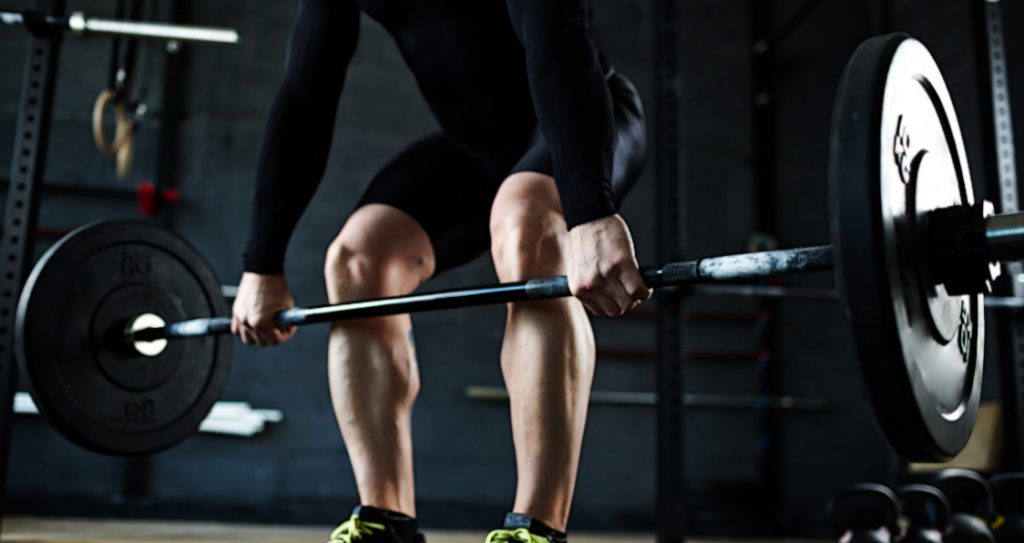Understanding Training Plateaus and How To Deal With Them
When things are going well in the gym, it’s a great feeling that cannot be matched. Your body is noticeably different, the weights are all going up, and motivation is through the roof. But, what about when things are not going so well? Training plateaus are a normal part of physical training and if you’ve not yet hit one, you will. Plateaus can be extremely frustrating and challenging. But, fear not, there are a number of methods that you can implement to allow you to break through these tough training plateaus.
This article will highlight four scientifically-backed strategies that can allow you to move beyond a plateau and start making progress again.
What Is A Training Plateau?
As the name suggests, a training plateau is where improvements stall or cease even though you are continuing to train consistently in the gym. A plateau will occur after a period of progress. Initially, you may find that you are consistently able to add weight or reps to your lifts, however, after a while, you will find this is not possible.
It’s important to recognize that the training plateau is part and parcel of physical training and a hurdle that all lifters will face at some point or another. Unfortunately, progress does not just go up in a straight line.
Therefore, understanding how to move beyond training plateaus is crucial if you aspire to continually improve.
What Causes A Training Plateau?
A training plateau occurs when the body has become accustomed to the training stimulus and can deal with the stresses associated with physical training. To best explain the relationship between the training stimulus and a plateau, let’s consider strength training novices. Those who are new to strength training have never been exposed to strength training before, their body rapidly adapts to deal with stress being placed on the muscles. As a result of this new training stimulus, muscular strength and size will increase which will allow them to lift heavier or perform a greater number of reps.
However, as their body becomes more highly conditioned, they will find that they are no longer able to add the same amount of weight or perform the same number of additional reps as previous. Eventually, they will reach a point where the body can comfortably deal with the demands of the workouts and, therefore, adaptations will cease.
This can be a frustrating period where the lifter is working hard in the gym yet is not reaping the rewards.
The most common strategy employed to help you start improving once again is to simply change the training stimulus, meaning more weight or volume. Introducing a new training stimulus that the body is not accustomed to will force it to start adapting once again.
However, some lifters (particularly athletes and the highly conditioned) may need to apply some additional measures to allow them most effectively move beyond a training plateau,
The Four Plateau-Busting Strategies
This section will outline four effective strategies that you should consider that will allow you to make progress again.
1) Switch Up Your Training Program
As reflected on, the most common strategy to bust a plateau is to change up the training stimulus. This means making alterations to your training program and workouts. Most lifters will attempt to change training volume and loading schemes.
For example, instead of following a program that revolves around heavy lifts of five sets of five reps, you might consider switching to a program that primarily uses moderate weights for sets of 10 reps or more.
While this undoubtedly can be an effective way of altering the training stimulus, research has suggested that there may well be a better strategy for plateau busting.
Results from one study have shown that introducing new exercises to a training program is an effective way of increasing strength levels and may be more significant than changing loading schemes (1).
Therefore, consider performing exercise variations that work the muscles of the body in a slightly different manner.
For example, instead of performing the back squat, you could switch to the front squat. Similarly, you may wish to swap the conventional bench for the incline bench. Another alternative would be to change the equipment that you are using. Instead of the barbell shoulder press, you could perform the press using dumbbells or cables.
2) Perform A Deload
Although changing up your training program is recommended, it may not always be necessary. In fact, it may actually be beneficial to reduce the training load. On the face of things, this may seem counterproductive. How can reducing the training stimulus lead to improvements?
Well, it all comes down to recovery. Although hard work in the gym is required, the extent to which you adapt is also dependent on your ability to recover.
You will only be able to make significant progress if your body has adequately recovered from the previous training session. Training with excessive intensity or failing to prioritize post-workout recovery may place too much stress on the body. If the body is unable to cope with this demand, substandard progress will be made. This is why performing a deload is important.
A deload is where the intensity and total training volume of each workout is substantially reduced. The purpose of this is to allow the body sufficient time to recover fully and avoid overtraining thus enhancing the rate of adaptation (2).
If you are unsure about how to effectively deload, a useful guide is to reduce total training volume by 40% for at least one week before ramping up the intensity once again.
3) Focus On Improving Sleep
When it comes to improving health and fitness, an important factor that is often overlooked is sleep. Often, sleep is sacrificed to cater for the busy lives that so many people live. However, getting inadequate sleep can be detrimental and contribute to a training plateau.
Research has determined that getting a good amount of sleep can lead to a greater improvement in muscular strength as it helps to generate testosterone and human growth hormone.
Conversely, poor sleep has been associated with a decrease in muscular strength (3).
During sleep cycles, the body is going through a variety of different processes that contribute towards our recovery from strength training sessions. Therefore, by failing to prioritize sleep, you may interfere with these processes and not allow the body to recover fully.
One particularly crucial process that occurs during sleep is hormone production. It is thought that poor sleep may interfere with this process and consequently impair repair and recovery (4).
As highlighted in the above point, recovery is key if you want to make significant improvements. While sleep demands differ from individual to individual, the general recommendation for adults is to sleep for seven to nine hours per night.
If you fail to get this amount of sleep, you may find it challenging to make significant progress in the gym, and should, therefore, make sleep a higher priority.
4) Analyze Your Nutrition
Staying on the topic of recovery, good nutrition also plays a massive role in recovery from training sessions.
The first area to consider is your calorie intake. For the majority of individuals, if you are not consuming enough calories per day, it may be extremely challenging to make substantial progress.
Secondly, you must have a look at your daily macronutrient intake. There are three macronutrients – carbohydrates, proteins, and fats. Your intake of carbohydrate and protein is particularly important when it comes to physical training.
Carbohydrates are sugars that provide the body with the energy required to perform exercise. Therefore, failing to consume enough carbs may negatively impact energy levels and athletic performance.
Most lifters will already know the importance of consuming enough protein each day. Protein helps in the muscle rebuilding process after a workout. Not consuming enough protein can inhibit recovery from training sessions which can negatively impact progress and even contribute towards overtraining.
Hydration is another extremely important factor to consider. There are a number of studies that have found that poor hydration levels can lead to a reduction in performance (5).
If you are unsure where to start, begin by tracking your nutrition and do so for a full week. Once the week is over, have a full audit of your nutrition and then look to implement any necessary changes.
Final Word on Breaking Through Training Plateaus
Although frustrating, plateaus are not insurmountable. With careful review of your training, sleep, and nutrition, it is very possible to bust through one.
Therefore, if you are in the position where improvements are few and far between, consider applying the four strategies outlined above.
References:
1 – https://pubmed.ncbi.nlm.nih.gov/24832974/ Fonseca, Rodrigo M.; Roschel, Hamilton; Tricoli, Valmor; de Souza, Eduardo O.; Wilson, Jacob M.; Laurentino, Gilberto C.; Aihara, André Y.; de Souza Leão, Alberto R.; Ugrinowitsch, Carlos (2014-11). “Changes in exercises are more effective than in loading schemes to improve muscle strength”. Journal of Strength and Conditioning Research. 28 (11): 3085–3092. doi:10.1519/JSC.0000000000000539. ISSN 1533-4287. PMID 24832974.
2 – https://www.ncbi.nlm.nih.gov/pmc/articles/PMC4637911/ Lorenz, Daniel; Morrison, Scot (2015-11). “CURRENT CONCEPTS IN PERIODIZATION OF STRENGTH AND CONDITIONING FOR THE SPORTS PHYSICAL THERAPIST”. International Journal of Sports Physical Therapy. 10 (6): 734–747. ISSN 2159-2896. PMC 4637911. PMID 26618056.
3 – https://www.ncbi.nlm.nih.gov/pmc/articles/PMC5749041/ Chen, Yanbo; Cui, Yufei; Chen, Shulei; Wu, Ziqiang (2017-12). “Relationship between sleep and muscle strength among Chinese university students: a cross-sectional study”. Journal of Musculoskeletal & Neuronal Interactions. 17 (4): 327–333. ISSN 1108-7161. PMC 5749041. PMID 29199194.
4 – https://www.ncbi.nlm.nih.gov/pmc/articles/PMC4860870/ Buchmann, Nikolaus; Spira, Dominik; Norman, Kristina; Demuth, Ilja; Eckardt, Rahel; Steinhagen-Thiessen, Elisabeth (2016-4). “Sleep, Muscle Mass and Muscle Function in Older People”. Deutsches Ärzteblatt International. 113 (15): 253–260. doi:10.3238/arztebl.2016.0253. ISSN 1866-0452. PMC 4860870. PMID 27151463.
5 – https://www.ncbi.nlm.nih.gov/pmc/articles/PMC4672008/ Sawka, Michael N.; Cheuvront, Samuel N.; Kenefick, Robert W. (2015). “Hypohydration and Human Performance: Impact of Environment and Physiological Mechanisms”. Sports Medicine (Auckland, N.z.). 45 (Suppl 1): 51–60. doi:10.1007/s40279-015-0395-7. ISSN 0112-1642. PMC 4672008. PMID 26553489.










